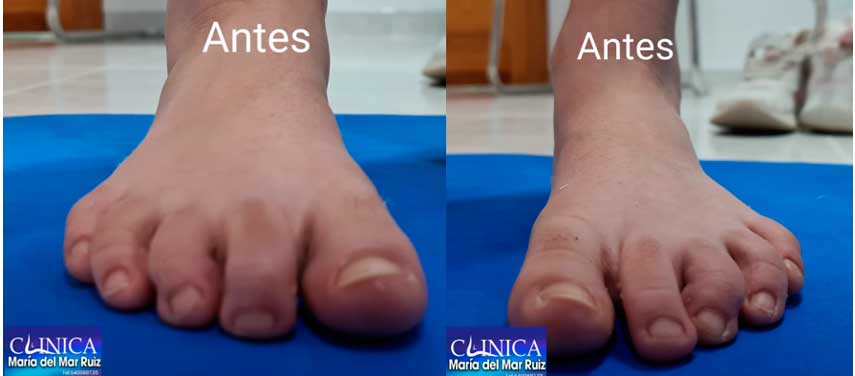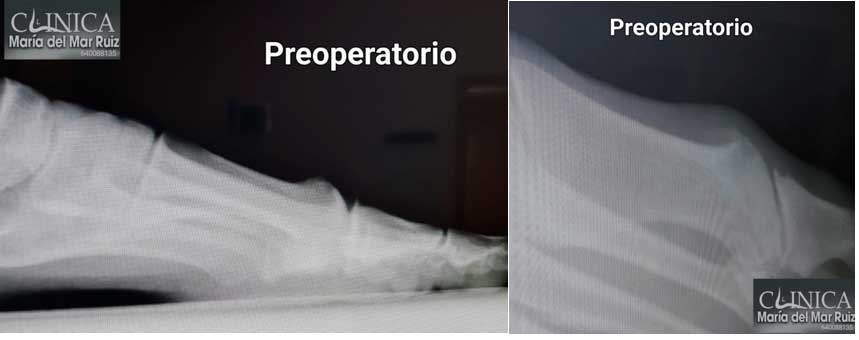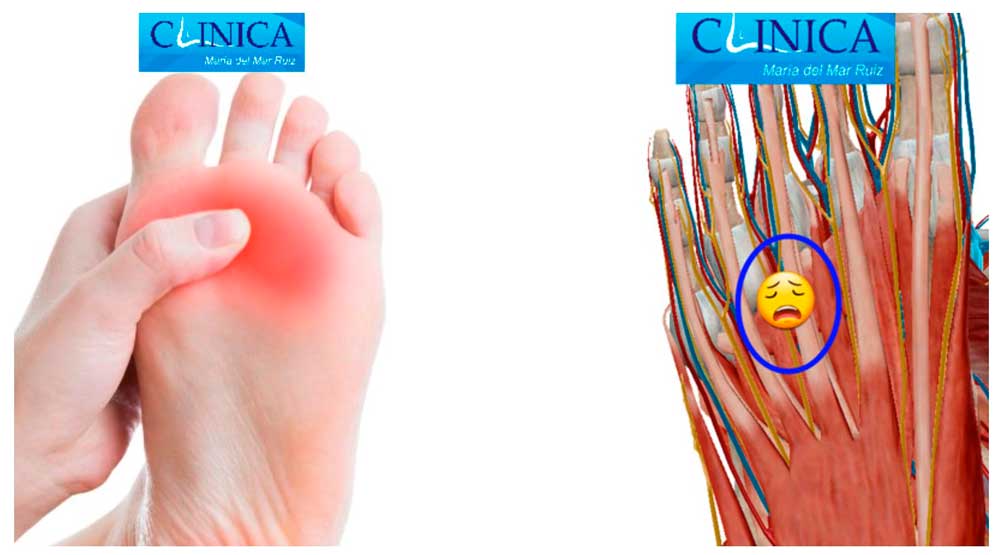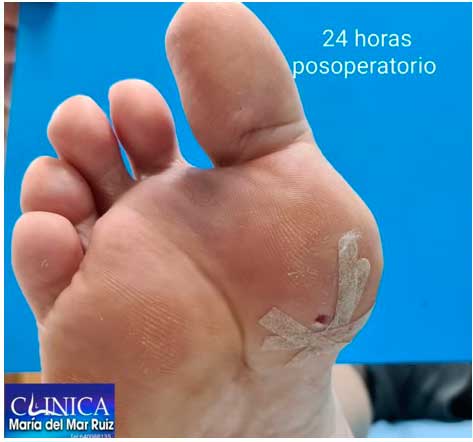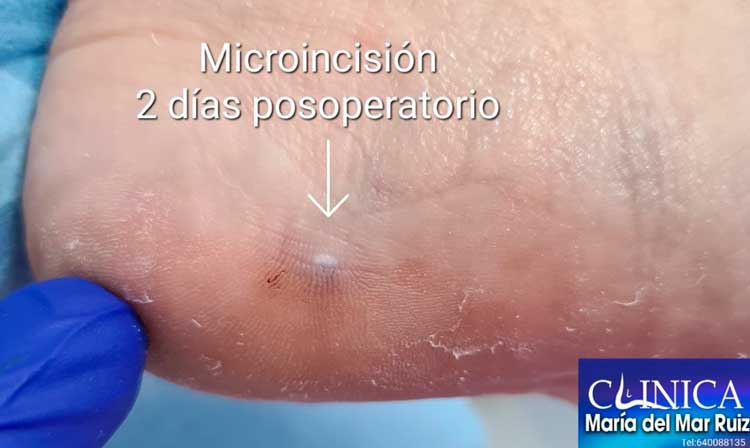
Testimonios de Podología
22 Ene Testimonio Metatarsalgia y Problemas Lumbares
[vc_row css_animation="" row_type="row" use_row_as_full_screen_section="no" type="full_width" angled_section="no" text_align="left" background_image_as_pattern="without_pattern" css=".vc_custom_1513669556121{margin-top: 75px !important;}" z_index=""][vc_column][vc_single_image image="21106" img_size="full" alignment="center" qode_css_animation=""][vc_single_image image="21100" img_size="full" alignment="center" qode_css_animation=""][/vc_column][/vc_row][vc_row css_animation="" row_type="row" use_row_as_full_screen_section="no" type="grid" angled_section="no" text_align="left" background_image_as_pattern="without_pattern" css=".vc_custom_1513890661021{background-color: #f6f5f4 !important;}" z_index=""][vc_column][vc_empty_space height="75px"][vc_column_text]TESTIMONIO METATARSALGIA Y PROBLEMAS LUMBARES.
[/vc_column_text][vc_empty_space][/vc_column][/vc_row][vc_row css_animation="" row_type="row" use_row_as_full_screen_section="no" type="grid" angled_section="no" text_align="left" background_image_as_pattern="without_pattern" css=".vc_custom_1513890661021{background-color: #f6f5f4 !important;}" z_index=""][vc_column][vc_column_text]Paciente que acude a nuestra consulta, derivada por su podólogo, debido a la presencia de dolor en la planta del pie derecho a nivel plantar, específicamente bajo las cabezas metatarsales. Acompañado de dedo montado que intensifica su dolor.22 Ene Operación de Juanetes por Cirugía Mínimamente Invasiva
[vc_row css_animation="" row_type="row" use_row_as_full_screen_section="no" type="full_width" angled_section="no" text_align="left" background_image_as_pattern="without_pattern" css=".vc_custom_1513669556121{margin-top: 75px !important;}" z_index=""][vc_column][vc_single_image image="21106" img_size="full" alignment="center" qode_css_animation=""][vc_single_image image="21100" img_size="full" alignment="center" qode_css_animation=""][/vc_column][/vc_row][vc_row css_animation="" row_type="row" use_row_as_full_screen_section="no" type="grid" angled_section="no" text_align="left" background_image_as_pattern="without_pattern" css=".vc_custom_1513890661021{background-color: #f6f5f4 !important;}" z_index=""][vc_column][vc_empty_space height="75px"][vc_column_text]OPERACIÓN DE JUANETES POR CIRUGÍA MÍNIMAMENTE INVASIVA.
[/vc_column_text][vc_empty_space][/vc_column][/vc_row][vc_row css_animation="" row_type="row" use_row_as_full_screen_section="no" type="grid" angled_section="no" text_align="left" background_image_as_pattern="without_pattern" css=".vc_custom_1513890661021{background-color: #f6f5f4 !important;}" z_index=""][vc_column][vc_column_text]Paciente de 73 años de edad que acude a nuestra consulta con la finalidad de buscar una solución a la afección de juanetes que padece, los cuales, le ocasionan un considerable malestar. La paciente presenta patologías asociadas como: hipotiroidismo y colesterol alto. Cuando la paciente acude a consulta, se lleva a cabo una exploración exhaustiva en la que se le realiza: exploración biomecánica, exploración radiológica y pruebas complementarias como la ecografía.30 Nov Dedos Torcidos o Infraaductus en Niños
[vc_row css_animation="" row_type="row" use_row_as_full_screen_section="no" type="full_width" angled_section="no" text_align="left" background_image_as_pattern="without_pattern" css=".vc_custom_1513669556121{margin-top: 75px !important;}" z_index=""][vc_column][vc_single_image image="21106" img_size="full" alignment="center" qode_css_animation=""][vc_single_image image="21100" img_size="full" alignment="center" qode_css_animation=""][/vc_column][/vc_row][vc_row css_animation="" row_type="row" use_row_as_full_screen_section="no" type="grid" angled_section="no" text_align="left" background_image_as_pattern="without_pattern" css=".vc_custom_1513890661021{background-color: #f6f5f4 !important;}" z_index=""][vc_column][vc_empty_space height="75px"][vc_column_text]DEDOS TORCIDOS O INFRAADUCTUS EN NIÑOS.
[/vc_column_text][vc_empty_space][/vc_column][/vc_row][vc_row css_animation="" row_type="row" use_row_as_full_screen_section="no" type="grid" angled_section="no" text_align="left" background_image_as_pattern="without_pattern" css=".vc_custom_1513890661021{background-color: #f6f5f4 !important;}" z_index=""][vc_column][vc_column_text]Clara es una niña de 8 años que acude a nuestra consulta en compañía de su madre, quien expresaba una notable preocupación ante la presencia de una deformidad en los dedos de los pies de su hija. Durante la evaluación clínica de la paciente, observamos que el tercer y cuarto dedo de ambos pies presenta una deviación comúnmente conocida como dedos infraaductus.29 Nov Me Duele el Dedo Gordo del Pie
[vc_row css_animation="" row_type="row" use_row_as_full_screen_section="no" type="full_width" angled_section="no" text_align="left" background_image_as_pattern="without_pattern" css=".vc_custom_1513669556121{margin-top: 75px !important;}" z_index=""][vc_column][vc_single_image image="21106" img_size="full" alignment="center" qode_css_animation=""][vc_single_image image="21100" img_size="full" alignment="center" qode_css_animation=""][/vc_column][/vc_row][vc_row css_animation="" row_type="row" use_row_as_full_screen_section="no" type="grid" angled_section="no" text_align="left" background_image_as_pattern="without_pattern" css=".vc_custom_1513890661021{background-color: #f6f5f4 !important;}" z_index=""][vc_column][vc_empty_space height="75px"][vc_column_text]ME DUELE EL DEDO GORDO DEL PIE.
[/vc_column_text][vc_empty_space][/vc_column][/vc_row][vc_row css_animation="" row_type="row" use_row_as_full_screen_section="no" type="grid" angled_section="no" text_align="left" background_image_as_pattern="without_pattern" css=".vc_custom_1513890661021{background-color: #f6f5f4 !important;}" z_index=""][vc_column][vc_column_text]Marta, paciente de 48 años, acude a la consulta debido al persistente dolor en el dedo gordo del pie izquierdo, desde hace 4 años. La paciente aqueja que ese dolor continúa incluso cuando se encuentra en la cama. Durante la exploración clínica la paciente nos comenta que, además, padece dolores en caderas, columna y zona lumbar (lumbalgia).21 Nov Enfermedad de Freiberg y metatarsalgia de 20 años de evolución
[vc_row css_animation="" row_type="row" use_row_as_full_screen_section="no" type="full_width" angled_section="no" text_align="left" background_image_as_pattern="without_pattern" css=".vc_custom_1513669556121{margin-top: 75px !important;}" z_index=""][vc_column][vc_single_image image="21106" img_size="full" alignment="center" qode_css_animation=""][vc_single_image image="21100" img_size="full" alignment="center" qode_css_animation=""][/vc_column][/vc_row][vc_row css_animation="" row_type="row" use_row_as_full_screen_section="no" type="grid" angled_section="no" text_align="left" background_image_as_pattern="without_pattern" css=".vc_custom_1513890661021{background-color: #f6f5f4 !important;}" z_index=""][vc_column][vc_empty_space height="75px"][vc_column_text]METATARSALGIA Y GEMELOS CORTOS DE DOS AÑOS DE EVOLUCIÓN.
[/vc_column_text][vc_empty_space][/vc_column][/vc_row][vc_row css_animation="" row_type="row" use_row_as_full_screen_section="no" type="grid" angled_section="no" text_align="left" background_image_as_pattern="without_pattern" css=".vc_custom_1513890661021{background-color: #f6f5f4 !important;}" z_index=""][vc_column width="1/2"][vc_single_image image="24478" img_size="full" qode_css_animation=""][vc_column_text]Ortesis plantares a medida, que llevaba nuestra paciente a diario, sin notar mejoría en su sintomatología.
14 Nov Metatarsalgia y Gemelos Cortos
[vc_row css_animation="" row_type="row" use_row_as_full_screen_section="no" type="full_width" angled_section="no" text_align="left" background_image_as_pattern="without_pattern" css=".vc_custom_1513669556121{margin-top: 75px !important;}" z_index=""][vc_column][vc_single_image image="21106" img_size="full" alignment="center" qode_css_animation=""][vc_single_image image="21100" img_size="full" alignment="center" qode_css_animation=""][/vc_column][/vc_row][vc_row css_animation="" row_type="row" use_row_as_full_screen_section="no" type="grid" angled_section="no" text_align="left" background_image_as_pattern="without_pattern" css=".vc_custom_1513890661021{background-color: #f6f5f4 !important;}" z_index=""][vc_column][vc_empty_space height="75px"][vc_column_text]METATARSALGIA Y GEMELOS CORTOS DE DOS AÑOS DE EVOLUCIÓN.
[/vc_column_text][vc_empty_space height="29px"][vc_column_text]Hoy os presentamos a Cristóbal, un paciente que desde hace dos años padece mucho dolor debajo de las cabezas metatarsales de ambos pies (metatarsalgia). En consulta le realizamos una exploración ecográfica de alta definición con ecógrafo Canon Aplio a, donde se evidencia la presencia de neuromas interdigitales en el 2º y 3er espacio intermetatarsal de ambos pies con signo de Mulder positivo.13 Nov Hallux Rígidus con Cirugía Mínimamente Invasiva
[vc_row css_animation="" row_type="row" use_row_as_full_screen_section="no" type="full_width" angled_section="no" text_align="left" background_image_as_pattern="without_pattern" css=".vc_custom_1513669556121{margin-top: 75px !important;}" z_index=""][vc_column][vc_single_image image="21106" img_size="full" alignment="center" qode_css_animation=""][vc_single_image image="21100" img_size="full" alignment="center" qode_css_animation=""][/vc_column][/vc_row][vc_row css_animation="" row_type="row" use_row_as_full_screen_section="no" type="grid" angled_section="no" text_align="left" background_image_as_pattern="without_pattern" css=".vc_custom_1513890661021{background-color: #f6f5f4 !important;}" z_index=""][vc_column][vc_empty_space height="75px"][vc_column_text]HALLUX RÍGIDUS CON CIRUGÍA MÍNIMAMENTE INVASIVA.
[/vc_column_text][vc_empty_space height="29px"][vc_column_text]Carmen es una paciente que acudió a nuestra clínica hace unos meses, derivada por un compañero. El motivo por el cual la paciente decidió ponerse en contacto con nosotros, se debía a un dolor que presentaba desde hace varios años en la articulación metatarsofalángica del dedo gordo del pie derecho. La paciente ha consultado con varios especialistas, y le han propuesto tratamientos quirúrgicos mediante cirugía abierta. En la exploración clínica de la paciente y mediante el test de Silfverskiöld, le diagnosticamos acortamiento gemelar.01 Ago Cirugía ecoguiada en sesamoideos
[vc_row css_animation="" row_type="row" use_row_as_full_screen_section="no" type="full_width" angled_section="no" text_align="left" background_image_as_pattern="without_pattern" css=".vc_custom_1513669556121{margin-top: 75px !important;}" z_index=""][vc_column][vc_single_image image="21106" img_size="full" alignment="center" qode_css_animation=""][vc_single_image image="21100" img_size="full" alignment="center" qode_css_animation=""][/vc_column][/vc_row][vc_row css_animation="" row_type="row" use_row_as_full_screen_section="no" type="grid" angled_section="no" text_align="left" background_image_as_pattern="without_pattern" css=".vc_custom_1513890661021{background-color: #f6f5f4 !important;}" z_index=""][vc_column][vc_empty_space height="75px"][vc_column_text]CIRUGÍA ECOGUIADA EN SESAMOIDEOS.
[/vc_column_text][vc_empty_space height="29px"][vc_column_text]Hoy os presentamos el caso de Pedro, un hombre de 59 años que ha experimentado problemas en el sesamoideo lateral del pie derecho, desde noviembre de 2020, debido a sus pies cavos. Los pies cavos son una condición en la que el arco longitudinal del pie se encuentra excesivamente elevado, esta deformidad puede resultar en diversas patologías, incluyendo problemas en los sesamoideos.01 Ago Liberación parcial de la fascia plantar ecoguiada
[vc_row css_animation="" row_type="row" use_row_as_full_screen_section="no" type="full_width" angled_section="no" text_align="left" background_image_as_pattern="without_pattern" css=".vc_custom_1513669556121{margin-top: 75px !important;}" z_index=""][vc_column][vc_single_image image="21106" img_size="full" alignment="center" qode_css_animation=""][vc_single_image image="21100" img_size="full" alignment="center" qode_css_animation=""][/vc_column][/vc_row][vc_row css_animation="" row_type="row" use_row_as_full_screen_section="no" type="grid" angled_section="no" text_align="left" background_image_as_pattern="without_pattern" css=".vc_custom_1513890661021{background-color: #f6f5f4 !important;}" z_index=""][vc_column][vc_empty_space height="75px"][vc_column_text]LIBERACIÓN PARCIAL DE LA FASCIA PLANTAR ECOGUIADA EN PACIENTE JOVEN POR DOLOR EN EL TALÓN.
[/vc_column_text][vc_empty_space height="29px"][vc_column_text]Belén es una paciente joven que ha estado sufriendo de fasciopatía plantar bilateral durante los últimos 3 años. A pesar de recibir tratamientos previos en otros centros sanitarios, como soportes plantares a medida (plantillas), terapia con EPI y ondas de choque, no ha experimentado mejoría en sus síntomas.- 1
- 2



